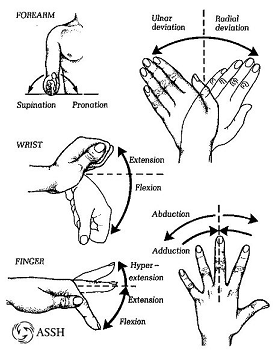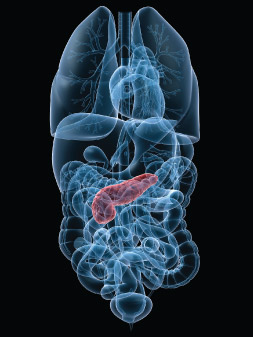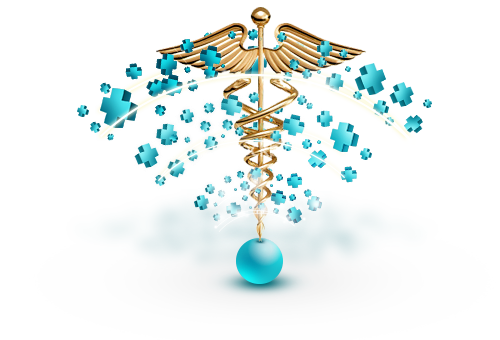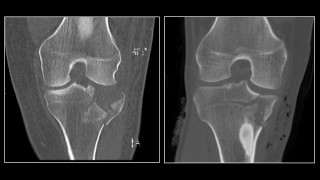News
Credit Newswise —
Children who are allergic to peanuts are far more likely to be exposed to them in their own homes that at school, says University of Montreal’s Sabrine Cherkaoui. Cherkaoui and her colleagues at McGill University came to the discovery after reviewing the circumstances surrounding 567 incidents of accidental peanut exposure to allergic children. “Our study looked at 1,941 children who had been diagnosed as being allergic to peanuts to determine how exposure occurs, how serious the outcomes of the exposure are, and what treatment is given,” explained Cherkaoui, who was first author of the study. “We discovered that children are most at risk of exposure in their own homes. Furthermore, when children do have a moderate or severe reaction to an exposure, parents and medical professionals often do not know how to react appropriately.” The research was directed by her research supervisor, McGill’s Dr. Ann Clarke.
The children were recruited from allergy clinics and allergy advocacy organizations. All the children in the study had suffered allergic reactions to peanuts in the past. The mean age of the children at the time of their recruitment into the study was 6.9 years, and the mean length of their participation was 2.9 years. During this time, 567 exposures would occur to 429 of them. The researchers classified 11.3% of the reactions to these exposures as “severe” and 50.1% as “moderate.” “Only 42% of severe peanut allergy reactions recorded in this study were evaluated by a medical professional, and almost one in six went totally untreated. For moderate reactions, the situation is far worse – medical attention was sought only 25% of the time,” Cherkaoui said. “This is despite 37% of exposures occurring in the child’s own home. Other people’s homes and restaurants accounted for 14.3% and 9.3% of exposures respectively. Schools and daycares where peanuts are forbidden represented 4.9% of the cases exposure; for schools and daycares where peanuts are allowed, it’s 3%.” Other and unknown places accounted for 31.6% of exposures.
The researchers did find that accidental exposures were less and less likely as the study went on, and they believe this is due to children and parents developing better avoidance strategies. However, adolescents were at a high-risk, something the team imputes to teenagers’ general predilection towards risk-taking behaviour. They also put forward two possible explanations for the lack of difference between peanut and peanut-free schools and daycares. “Firstly, schools and daycares that allow peanuts may be doing a good job of controlling risk due to heightened awareness of the dangers. Secondly, when peanuts are not allowed, the child may be lulled into a false sense of security, as peanut-foods may inadvertently be brought in and shared with the child,” Cherkaoui explained. “The most significant finding of this study is the discovery that most moderate and severe accidental exposures are managed inappropriately by caregivers and physicians. We believe that more education is required on the importance of strict allergen avoidance and the need for prompt and correct management of anaphylaxis.”
Credit Newswise —
Used in combination, two innovative rehabilitation approaches can promote better long-term recovery of arm and hand movement function in stroke survivors, suggests a paper in the American Journal of Physical Medicine & Rehabilitation, the official journal of the Association of Academic Physiatrists. The journal is published by Wolters Kluwer.
Adding peripheral nerve stimulation (PNS) to "constraint-based" therapy enhances recovery of movement in the affected arm and hand—even more than one year after a stroke, according to the study by Dr. Lumy Sawaki and colleagues of University of Kentucky, Lexington.
Adding Nerve Stimulation Improves Results of Constraint-Based TherapyThe preliminary study evaluated the effects of combining two emerging approaches to post-stroke rehabilitation of partial paralysis (hemiparesis). Constraint-induced therapy (CIT) is an approach that forces "intensive, task-oriented use" of the affected hand. This is done by limiting movement of the less-affected hand, forcing the patient to use the partially paralyzed limb.
Peripheral nerve stimulation consists of non-invasive, low-level electrical stimulation applied to the nerves in the paralyzed arm muscles, which in turn increases activity in the brain area that controls the arm. Both CIT and PNS take advantage of the brain's potential for "neuroplasticity"—the ability to reorganize or "rewire" itself after injury.
The study included 19 stroke survivors who were left with mild to moderate hemiparesis of one upper limb, at least one year after a stroke. All received a modified CIT approach, including wearing a padded mitt on the less-affected hand during therapy sessions. Subjects were also asked to wear the mitt for 90 percent of waking hours during their daily lives.
In addition, subjects received either active or "sham" (inactive) PNS, delivered through electrodes placed on the affected arm. At each session, PNS was applied for two hours, followed by four hours of CIT.
After ten sessions, arm and hand function improved for both groups. But on most measures, improvement was significantly greater for patients who received active PNS added to CIT. Grip strength was the only measure to show no significant added advantage with active PNS.
Significant differences between groups persisted to one-month follow-up. "Compared with the sham PNS group, the active PNS group may have made more extensive use of the affected upper extremity in settings outside the lab, such as in activities of daily living," Dr. Sawaki and coauthors write. However, they caution that further studies are needed to provide conclusive evidence in this regard.
There's a crucial need for treatments to enhance long-term recovery of function after a stroke—particularly after the first year, when most spontaneous improvement occurs. Both CIT and PNS can enhance movement function after stroke. The new study is the first to suggest that combining these two techniques can lead to further improvement in arm and hand movement in stroke survivors with mild-to-moderate chronic hemiparesis.
"It appears that PNS has enormous promise as a clinical intervention to enhance outcomes of motor training for stroke survivors with mild to moderate hemiparesis," Dr. Sawaki and colleagues conclude. They emphasize the need for further research to maximize the benefits of combined PNS and other rehabilitation techniques—including studies to optimize the PNS sites and settings and the other approaches used.
Credit Newswise
Scientists in California have provided the first detailed look at how human antibodies, proteins critical for the body's defense against invading pathogens, may actually drive human immunodeficiency virus (HIV) to mutate and escape detection by the immune system. The findings, reported online March 18 in the Proceedings of the National Academy of Sciences, may be key in efforts to develop an effective AIDS vaccine.
A team led by Douglas D. Richman, MD, a virologist and physician with the Veterans Affairs (VA) San Diego Healthcare System and the University of California, San Diego (UCSD) School of Medicine, found that patients infected with HIV rapidly develop a strong antibody response against the virus. But the same antibodies tasked with recognizing and disabling the germ appear to force its ongoing evolution into new strains that dance around the antibody response and continue to replicate.
"The neutralizing antibodies are exerting a very strong selective pressure on the virus, and the virus is continually mutating to avoid it," said Richman, a noted AIDS researcher who recently won VA's Middleton Award, the agency's highest honor for biomedical researchers.
The researchers used sophisticated new technology, made by California-based ViroLogic, Inc., to clone actual virus from the blood plasma of HIV patients and genetically combine it with a gene that makes luciferase, the same light-emitting enzyme in fireflies. The glowing enzyme helped the scientists track the virus' replication.
Richman and colleagues took viral samples periodically from HIV patients and incubated the virus with antibody-containing plasma samples from the same patients. Blood plasma contains antibodies but no white blood cells. This way, the researchers could tease out the effects of antibodies alone on the virus, independent of the rest of the immune system.
The results, based on tests of 19 patients over 39 months, showed that most patients developed a high concentration, or titer, of antibodies to HIV within a few months, and the antibodies continually changed their "spectrum of activity" to keep pace with the ever-changing virus. That is, the antibodies evolved in their ability to recognize different protein shapes on the outer coating of the virus.
However the virus consistently evolved faster than the antibody response, developing new protein structures on its surface, so that antibodies from previous months' samples were ineffective in neutralizing new virus from the same patient.
"The bad news is that the virus is always staying a step ahead, and the neutralizing antibody response can't control it," said Richman.
At the same time, Richman said neutralizing antibodies could hold promise as a therapy, or vaccine, if scientists can engineer them to recognize many different strains of virus.
"An optimistic view is that this antibody response is a very potent selective force," said Richman. "If it were present at the time of exposure [to the virus], it could provide some protection."
The AIDS virus has been described as a "genetic moving target" because of its frustrating ability to rapidly mutate and escape the body's efforts to neutralize or destroy it. In fact, up to dozens of strains can develop within the same person. Also, HIV infects and disables the very immune cells, helper T cells, which are supposed to mobilize the immune system against the virus. Richman's study is the first to track in detail how the virus outpaces the antibody response over time.
Since 1987, researchers have studied about 60 potential HIV vaccines to help stem the AIDS epidemic. So far, no vaccine has won Food and Drug Administration approval as safe and effective. Most scientists agree that for a vaccine to work, it will need to activate both arms of the immune system: antibodies, which are key in thwarting the initial infection; and killer white blood cells, which provide longer-term protection.
In recent years, AIDS scientists have made progress on the cellular front; several vaccines using this approach are in the pipeline for clinical trials. But understanding how to get neutralizing antibodies to work against HIV has proved a tougher challenge.
According to the Centers for Disease Control and Prevention, 800,000 to 900,000 Americans are living with HIV infection. VA, the nation's largest health-care system, is also the nation's largest single provider of health care to those with HIV. In fiscal year 2001, more than 18,500 veterans received care for HIV at VA medical centers and clinics.
Richman directs VA's Research Center for AIDS and HIV Infection and the Center for AIDS Research at UCSD. Collaborating with him on the study were Susan J. Little, MD, a principal investigator in UCSD's Antiviral Research Center and a VA infectious disease specialist; and Terri L. Wrin and Christos J. Petropoulos of ViroLogic, Inc. The firm, which specializes in HIV drug resistance testing, developed the DNA viral test used in the study. Richman serves on the company's scientific advisory board.
Credit Newswise —
Researchers at University of California, San Diego School of Medicine and Shiley Eye Institute, with colleagues in China, have developed a new, regenerative medicine approach to remove congenital cataracts in infants, permitting remaining stem cells to regrow functional lenses.
The treatment, which has been tested in animals and in a small, human clinical trial, produced much fewer surgical complications than the current standard-of-care and resulted in regenerated lenses with superior visual function in all 12 of the pediatric cataract patients who received the new surgery.
The findings are published in the March 9 online issue ofNature.
Congenital cataracts – lens clouding that occurs at birth or shortly thereafter – is a significant cause of blindness in children. The clouded lens obstructs the passage of light to the retina and visual information to the brain, resulting in significant visual impairment. Current treatment is limited by the age of the patient and related complications. Most pediatric patients require corrective eyewear after cataract surgery.
“An ultimate goal of stem cell research is to turn on the regenerative potential of one’s own stem cells for tissue and organ repair and disease therapy,” said Kang Zhang, MD, PhD, chief of Ophthalmic Genetics, founding director of the Institute for Genomic Medicine and co-director of Biomaterials and Tissue Engineering at the Institute of Engineering in Medicine, both at UC San Diego School of Medicine.
In the new research, Zhang and colleagues relied upon the regenerative potential of endogenous stem cells. Unlike other stem cell approaches that involve creating stem cells in the lab and introducing them back into the patient, with potential hurdles like pathogen transmission and immune rejection, endogenous stem cells are stem cells already naturally in place at the site of the injury or problem. In the case of the human eye, lens epithelial stem cells or LECs generate replacement lens cells throughout a person’s life, though production declines with age.
Current cataract surgeries largely remove LECs within the lens; the lingering cells generate disorganized regrowth in infants and no useful vision. After confirming the regenerative potential of LECs in animal models, the researchers developed a novel minimally invasive surgery method that preserves the integrity of the lens capsule – a membrane that helps give the lens its required shape to function – and a way to stimulate LECs to grow and form a new lens with vision.
In subsequent tests in animals with cataracts and in a small human trial, they found the new surgical technique allowed pre-existing LECs to regenerate functional lenses. In particular, the human trial involved 12 infants under the age of 2 treated with the new method and 25 similar infants receiving current standard surgical care. The latter control group experienced a higher incidence of post-surgery inflammation, early-onset ocular hypertension and increased lens clouding.
The scientists reported fewer complications and faster healing among the 12 infants who underwent the new procedure and, after three months, a clear, regenerated biconvex lens in all of the patients’ eyes.
“The success of this work represents a new approach in how new human tissue or organ can be regenerated and human disease can be treated, and may have a broad impact on regenerative therapies by harnessing the regenerative power of our own body,” said Zhang, who also has an appointment at Veterans Affairs San Diego Healthcare System.
Zhang said he and colleagues are now looking to expand their work to treating age-related cataracts. Age-related cataracts is the leading cause of blindness in the world. More than 20 million Americans suffer from cataracts, and more than 4 million surgeries are performed annually to replace the clouded lens with an artificial plastic version, called an intraocular lens.
Despite technical advances, a large portion of patients undergoing surgery are left with suboptimal vision post-surgery and are dependent upon corrective eyewear for driving a car and/or reading a book. “We believe that our new approach will result in a paradigm shift in cataract surgery and may offer patients a safer and better treatment option in the future.”
Credit Newswise —
Chronic psychosocial and emotional stress has well-documented negative effects upon the human immune system, measurably increasing the risk of disease. Much less is known about the health effects of acute but transitory episodes of stress, such as jumping out of an airplane. Do these panic-inducing moments also raise the risk of stress-related conditions and disorders, such as cardiovascular disease, sleep dysfunction, impaired wound healing, depression and obesity?
A team of researchers at University of California, San Diego School of Medicine, Stony Brook University in New York and elsewhere addressed that question by asking study participants to literally jump out of a plane, taking blood samples before and after to measure key immune response indicators.
Their findings are published in the March 4 issue of Brain, Behavior and Immunity.
“In our everyday lives, acute stress is manageable and does not cause physiological damage,” said study co-author Brinda Rana, PhD, associate professor in the Department of Psychiatry at UC San Diego School of Medicine. “However, for those who experience it frequently, it can be a risk for chronic diseases and disorders, such as cardiovascular and immune modulated inflammation. And since the health of the immune system is crucial to protection against pathogens and other diseases, it’s important to understand the impact of stressful life events on the ability of our immune system to properly do its job.”
The study involved 39 individuals (24 males, 15 females) who had independently contacted a New York-area skydiving school to schedule a first-time tandem sky dive in which the student skydiver was connected by harness to an instructor who guided the student through the jump, freefall and landing.
All of the participants were healthy adults with no history of cardiac or mental illness. They were divided into two groups: 13 would have their RNA expression profiles measured to understand molecular signatures associated with stress, and 26 would be studied by flow cytometry to access changes in immune cell composition in blood.
Blood sampling was precisely scheduled by the lab of co-author Lilianne R. Mujica-Parodi, PhD, associate professor in the Department of Biomedical Engineering at Stony Brook University. Participants provided a baseline blood sample at 9:15 a.m. within one week prior to or one day after the sky dive. On the day of the skydive, all participants awoke at 6:30 a.m. and arrived at Stony Brook University Hospital at 7:30 a.m. where “pre-boarding” samples were collected at 9:15 a.m., one hour before take-off.
The actual jump occurred at 10:30 a.m., when the airplane reached an altitude of 11,550 feet. Skydivers landed five minutes later, with post-landing samples taken at 10:45 a.m. and again at 11:30 a.m. back at the hospital.
“Our tandem skydive instructor is also a phlebotomist,” said Mujica-Parodi. “He carried the blood draw supplies with him on the jump and was poised to draw blood as soon as the skydivers hit the ground.”
In addition, saliva samples were collected every 15 minutes from 9:15 a.m. to 11:30 a.m. on both the day of the sky dive and the baseline hospital day.
Previous research has shown that acute, short-term stress provokes a mixed bag of immune responses, some beneficial, some not. For example, numbers of natural killer cells, which are part of the innate immune response, increase, but skin healing capacity is reduced. The novelty of the study, said Rana, is leveraging advanced computational and molecular tools to assess large-scale immune system responses, to more finely detail the effects of acute, short-term stress.
“Our study is the first to probe the rapid transcriptomic (messenger RNA) changes in white blood cells that occur before and after an acute psychological stressor,” said Rana. “We identified specific genes and pathways involved in both the innate and the adaptive immune response that were dysregulated in response to the acute stress of the sky dive, and which returned rapidly to natural baseline levels one hour after the jump.”
Interestingly, the researchers noted that modules of coordinately expressed genes responding to stress were different between male and female skydivers, which they say may help explain gender differences observed in development of stress related cardiovascular and autoimmune disorders, as well as conditions like post-traumatic stress disorder (which is twice as common in women).
Nadejda Beliakova-Bethell, PhD, first co-author of the study and an assistant project scientist at UC San Diego, with background in infectious diseases, said while the research was exploratory, it laid the foundation for future, more detailed experiments to elucidate the contribution of stressful life events and exposure to pathogens to the functioning of the immune system.
“The immune response to stress is similar to the response to pathogens,” said Beliakova-Bethell. “An instance of an acute stress or infection activates the immune system, while chronic stress or infection results in the exhaustion of the immune system, making it less effective at responding to new stressful events or new pathogens. The effects on the transcriptome of white blood cells, observed in this study, were very transient, returning to baseline levels within one hour after landing, but with repeated acute or chronic stress, these transcriptomic changes would be expected to be more permanent, and may be similar, at least in part, to the effects of chronic viral infection.
“Future studies could make an important contribution to identifying gene targets for developing therapeutic strategies that would help people to cope with the prolonged effects of a stressor or to fight new infections. This would be specifically important for the elderly, who would have accumulated effects of stressors and infections throughout their lifetimes.”
Credit Newswise —
When you buy a cup of coffee, a load of groceries, an airline ticket or a tank of gas these days, you probably pull out a customer loyalty card without even thinking about it. It might even be linked to how you pay.
You may be thinking mostly about the perks you’re earning. But the place you’re buying from is focused on keeping your business, getting your positive word of mouth to family and friends – and even making you more tolerant of problems for the sake of rewards.
Now, a team from the University of Michigan Medical School has proposed that healthcare providers should offer the same kinds of programs – for reasons that go far beyond what other businesses use them for.
In a new viewpoint piece in the journal JAMA, a trio of U-M healthcare researchers affiliated with the U-M Institute for Healthcare Policy and Innovation lays out the case for customer loyalty programs in healthcare.
The main driver, they say, should be the need for hospitals, clinics and other providers to keep patients coming back to them so they can succeed as Accountable Care Organizations.
ACOs give healthcare providers a chance to earn extra payments if they provide high-quality care and keep healthcare cost growth down for a defined population of patients, in part by keeping patients healthy so they need less medical care.
Trouble is, those populations keep shifting. About 38 percent of those who saw doctors in a Medicare ACO’s network in a given year, according to one study, were seeing patients outside the ACO by the next year.
The federal rules for ACOs ensure that patients have freedom of choice for which doctors they see – but ACO-participating hospitals, clinics and doctors only get rewarded when they can coordinate patients’ care in a continuous way.
For instance, by encouraging patients to get screenings and preventive care, and reducing inappropriate use of care, ACOs can try to hold down the growth of costs while delivering high-quality care.
Plus, hospitals and clinics, even outside of ACOs, can earn bonuses based on how satisfied their patients say they are.
“Loyalty programs have the potential to enhance both health and financial benefits to patients and health system,” says Laurence McMahon, M.D., MPH, lead author of the piece and chief of general medicine at U-M.
However, he and his colleagues note, healthcare loyalty programs should differ from coffee shop and gas station programs in a key way: they should never base their rewards solely on the basis of how often patients visit or receive care.
But offering perks to patients based on how long they’ve stayed with the same doctors, or how often they’ve chosen to receive the care they need from sites within the network, could work.
So could expanding the concept of the “network” that the patients can visit to earn perks – for instance, urgent care centers and pharmacies, or even restaurants and grocery stores offering healthy food programs.
Unlike hospital programs designed to cultivate wealthy patients by offering them different levels of hospital accommodations, food and clinic access, broad-based loyalty programs could be open to all patients.
While the new piece only lays out the concept of healthcare loyalty programs for others to consider, the authors point to the potential effects.
“Loyalty programs could empower patients to manage their health in new and innovative ways while enhancing the business model for health systems,” they write. “If successful, such programs may help improve both customer care and clinical care. That’s one membership card worth having.”
Credit Newswise —
Computed Tomography (CT) scans are one of the most frequently used imaging tools in medicine. In fact, more than 72 million scans are performed each year to diagnose various medical conditions. But public health concerns persist about radiation exposure from these tests—especially when given to children and young adults. Now, researchers at NYU Langone Medical Center are reporting in a new study that they successfully performed CT scans for joint fractureswith one-fourteenth the amount of normal CT radiation—without compromising image quality or a surgeon’s ability to effectively diagnose an injury.
Specifically, the researchers reduced the average amount of radiation from 0.43 msV to 0.03 msV, or down to the average dose given in a routine chest X-ray. Equally important, the researchers were able to accurately identify the presence of typical fractures 98 -percent of the time.
“We have taken a frequently used and necessary imaging test and made it safer,” says lead study author Sanjit R. Konda, MD, assistant professor of orthopaedic surgery at NYU Langone and director of orthopaedic trauma at Jamaica Hospital Medical Center. “Providing patients with a CT scan with 14-times less radiation could have significant implications from a public health and safety standpoint.”
The findings are being presented Wednesday, March 2, at the 2016 American Academy of Orthopedic Surgeons (AAOS) Annual Meeting.Radiation in CT Scans: A Public Health ConcernCT scans help diagnose medical conditions including broken bones, cancers, internal bleeding, or signs of heart disease. Yet, despite its prevalent use, medical societies and federal agencies have been increasingly trying to reduce the number of unnecessary scans due to radiation’s link to an increased risk for cancer. While the overall risk is considered low, there is particular concern in performing CT scans on children. Approximately 600,000 head and abdominal CT scans are annually performed in children under 15.
In orthopaedic trauma, CT scans help diagnose injuries around a joint, particularly if the fracture involves the joint’s surface. The scans also help clinicians assess joint displacement and aid in surgical planning to put the joint back in position. An X-ray, while a good initial screening tool, does not provide the same level of detail.
Protocol Put to the TestDr. Konda’s team worked with radiologists from NYU Langone, led by study co-author Soterios Gyftopoulos, MD,an assistant professor of radiology, to reduce the amount of CT radiation while maintaining image quality. Together, they developed a protocol called REDUCTION (Reduced Effective Dose Using Computed Tomography In Orthopaedic Injury).Previously, the group applied this protocol to examine air around a knee joint where infections easily could develop. Its application was so successful that the researchers set out to use the protocol to reduce radiation for traumatic joint fractures, such as those caused by a car accident or fall.
Between August 2014 and March 2015, 50 patients showing clinical symptoms of joint fractures received ultra-low dose radiation CT scans. Images from these ultra-low dose CT scans were compared to a sample of age-matched, similar fracture injuries where patients were evaluated with a standard CT scan.
The results were impressive: researchers achieved 98 percent sensitivity and 89 percent specificity with the ultra-low dose CT scans. In other words, if a person has a joint fracture, it would be detected on the ultra-low dose CT scan 98 percent of the time, while a negative finding—no fracture having occurred—was determined 89 percent of the time. Equally important, these findings were comparable to the conventional CT-scans (98 percent sensitivity and 85 percent specificity with occult fractures removed). Image quality was rated moderate to near perfect by the orthopaedic surgeons.“The ability to perform ultra-low dose radiation CT scans without compromising image quality demonstrates the comprehensive capabilities of this protocol,” says senior study author Kenneth A. Egol, MD, professor of orthopaedic surgery and chief of the Trauma and Fracture Division of the Department of Orthopaedic Surgery at NYU Langone. “Patients who undergo a traumatic injury or suspected fracture have enough to worry about. Our research makes radiation exposure among the least of their concerns.”Next, the researchers will continue to follow-up patients who underwent the ultra-low dose CT scans to ensure patient outcomes haven’t changed in the hopes of expanding the protocol to other departments.
Credit Newswise —
A new study provides a major link between low levels of vitamin D and aggressive prostate cancer. Northwestern Medicine research showed deficient vitamin D blood levels in men can predict aggressive prostate cancer identified at the time of surgery.
The finding is important because it can offer guidance to men and their doctors who may be considering active surveillance, in which they monitor the cancer rather than remove the prostate.
“Vitamin D deficiency may predict aggressive prostate cancer as a biomarker,” said lead investigator Dr. Adam Murphy, an assistant professor of urology at Northwestern University Feinberg School of Medicine and a Northwestern Medicine urologist. “Men with dark skin, low vitamin D intake or low sun exposure should be tested for vitamin D deficiency when they are diagnosed with an elevated PSA or prostate cancer. Then a deficiency should be corrected with supplements.“
Previous studies showing an association between vitamin D levels and aggressive prostate cancer were based on blood drawn well before treatment. The new Northwestern study provides a more direct correlation because it measured D levels within a couple of months before the tumor was visually identified as aggressive during surgery to remove the prostate (radical prostatectomy).
The relationship between vitamin D and prostate cancer may explain some disparities seen in prostate cancer, especially among African American men. Prior research by Murphy and colleagues showed African American men who live in low sunlight locations are up to 1½ times more likely to have vitamin D deficiency than Caucasian men.
But because vitamin D is a biomarker for bone health and aggressiveness of other diseases, all men should check their levels, Murphy said.
“All men should be replenishing their vitamin D to normal levels,” Murphy said. “It’s smart preventive health care.”
Aggressive prostate cancer is defined by whether the cancer has migrated outside of the prostate and by a high Gleason score. A low Gleason score means the cancer tissue is similar to normal prostate tissue and less likely to spread; a high one means the cancer tissue is very different from normal and more likely to spread.
The study was published in the Journal of Clinical Oncology Feb. 22. Murphy collaborated on the study with Rick Kittles, associate director of cancer disparities at the University of Arizona Cancer Center.
The study was part of a larger ongoing study of 1,760 men in the Chicago area examining vitamin D and prostate cancer. The current study included 190 men, average age of 64, who underwent a radical prostatectomy to remove their prostate from 2009 to 2014.
Of that group, 87 men had aggressive prostate cancer. Those with aggressive cancer had a median level of 22.7 nanograms per milliliter of vitamin D, significantly below the normal level of more than 30 nanograms/milliliter. The average D level in Chicago during the winter is about 25 nanograms/milliliter, Murphy noted.
Most people in Chicago should be on D supplements, particularly during winter months, Murphy said.
“It’s very hard to have normal levels when you work in an office every day and because of our long winter,” he said. The Institute of Medicine recommends 600 international units of D per day, but Murphy recommends Chicago residents get 1,000 to 2,000 international units per day.
The paper is titled: “Associations Between Serum Vitamin D and Adverse Pathology in Men Undergoing Radical Prostatectomy.”
Credit Newswise —
Nutrition-related factors influence athletic performance, and registered dietitian nutritionists who are also certified specialists in sports dietetics are the best-qualified professionals to assist active adults and competitive athletes, according to a revised position paper from the American College of Sports Medicine, the Academy of Nutrition and Dietetics and the Dietitians of Canada.
The position paper, “Nutrition and Athletic Performance,” has been published in the March issue of Medicine & Science in Sports and Exercise®:
It is the position of the American College of Sports Medicine, the Academy of Nutrition and Dietetics and the Dietitians of Canada that the performance of, and recovery from, sporting activities are enhanced by well-chosen nutrition strategies. These organizations provide guidelines for the appropriate type, amount and timing of intake of food, fluids and supplements to promote optimal health and performance across different scenarios of training and competitive sport. The position paper outlines ACSM’s, the Academy’s and DC’s stance on nutrition factors that have been determined to influence athletic performance and emerging trends in the field of sports nutrition. "Athletes should be referred to a registered dietitian nutritionist for a personalized nutrition plan,” according to the paper.
The position paper highlights new perspectives in sports nutrition, acknowledging the growth of the field as a dynamic area of science and practice that continues to flourish in both the scope of support it offers to athletes and the strength of evidence that underpins its guidelines.
“The position paper recognizes that nutrition goals and requirements for athletes are not static and therefore should be periodized, taking into account the needs of daily training sessions and overall individual nutrition goals,” according to the authors.Significant points of the position paper include:
• Calorie, nutrient and fluid recommendations for active adults and competitive athletes vary before, during and after sporting activities.• New perspectives on sports nutrition include individualized recommendations that accommodate the unique issues of individual athletes regarding health, nutrient needs, performance goals, physical characteristics (body size, shape, growth and composition) and food preferences.• Optimal health and athletic performance may be affected by appropriate type, amount and timing of food, fluid and supplement choices across different scenarios of training and competitive sports.
Credit Newswise —
Since it was first imported in the 1980’s on a large scale, Greek yogurt has quickly grown to a very popular healthy snack in the United States. Many consumers have wondered what Greek yogurt is all about and if it’s really much healthier than regular yogurt and worth the higher price. Dr. Zhiping Yu, assistant professor in the Nutrition and Dietetics Flagship Program at the University of North Florida, shares more about this popular dairy product. In order to include Greek yogurt in your diet, a recipe is included.
Myth: Greek yogurt is a yogurt from Greece.
Fact: The history of where Greek yogurt originated is unclear. Greece is the obvious best guess. It’s also a common yogurt found in South Asia, other Mediterranean countries, the Middle East and now the United States.
Myth: Greek yogurt is made the same way as regular yogurt.
Facts: Greek yogurt starts out the same as regular yogurt by fermenting the milk with healthy live bacteria cultures, then it’s strained or concentrated to remove the liquid whey. Greek yogurt is thicker and creamier than regular yogurt. It takes up to four times the liquid milk to make the same amount of Greek yogurt as it does to make regular yogurt, which is the reason it’s more expensive than regular yogurt.
Myth: Greek yogurt is uniquely nutritious.
Fact: The nutrition value of Greek yogurt is superior to regular yogurt in that it’s higher in protein and lower in carbohydrates for a similar calorie count. A 6-ounce serving of Greek yogurt contains 15 to 20 grams of protein, almost twice that of regular yogurt. The high-protein content helps to control hunger level, a benefit for those who are cutting calories or managing weight.
Like most yogurts, Greek yogurt is an excellent source of probiotics, which helps ensure proper digestion, absorption of some nutrients and support immune health. While calcium content is lower in Greek yogurt than regular yogurt (as it’s lost through the straining process), it’s still considered a good source of calcium.
Myth: Greek yogurt is lower in calories than regular yogurt.
Fact: The same serving of plain Greek yogurt has a similar calorie count as plain regular yogurt. Though Greek yogurt is lower in carbohydrates due to the straining process, some varieties of Greek yogurt have added sweeteners, which may significantly increase the carbohydrate and calorie content. Check the label for the nutrition value of different varieties of Greek yogurt.
Myth: The only way to enjoy Greek yogurt is as a snack.
Fact: Greek yogurt can be consumed in a variety of occasions – as a snack, a meal, an ingredient or as a substitution in cooking. Plain Greek yogurt may be eaten sweet or savory. In cooking, its thicker consistency makes it a great addition in place of higher fat ingredients, such as regular sour cream, heavy cream, mayonnaise and cream cheese.
Pasta Carbonara
Yields: 6 servings
Ingredients:
1 teaspoon olive oil 4 ounces thinly-sliced prosciutto, diced 2 red bell peppers, sliced 2 garlic cloves, minced 1 teaspoon red pepper flakes 1½ cups plain Greek yogurt 2 whole eggs ½ cup freshly grated Parmesan cheese ½ teaspoon salt ½ teaspoon black pepper 1 pound dry spaghetti 1 cup frozen sweet peas ¼ cup freshly chopped parsley
Directions:
In a medium nonstick skillet, heat oil over medium heat. Add prosciutto and bell peppers. Cook while stirring often until heated through (about 2 minutes). Add garlic and red pepper flakes. Cook 30 seconds, stirring. Remove from heat; set aside. In large bowl, whisk together yogurt, eggs, Parmesan cheese, salt and pepper. Cook pasta in boiling water for 6 minutes, stirring often. Add peas to boiling water. Cook until pasta is tender but firm, about 4 additional minutes. Drain and reserve 1 cup pasta water. Put pasta directly in bowl with yogurt mixture; add reserved pasta water. Add prosciutto mixture. Toss to coat well. Serve immediately. Garnish with chopped parsley.
This recipe was created and tested by Clemson University’s Culinary Nutrition Undergraduate Student Research Group.
















